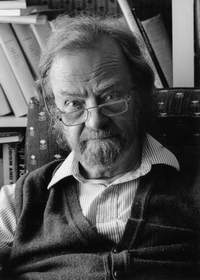
Free verse makes liberal use of line breaks, lack of rhyming, word choices, and lengths to create poems that reflect the writer’s deepest feelings and natural speech rhythms.
Poet Harvey Stanbrough (Beyond the Masks) likes to say of free verse, "There’s nothing truly free about it. All well-written free verse is metrically sound." Stanbrough’s view was echoed by former U.S. Poet Laureate Donald Hall, who said, "The form of free verse is as binding and as liberating as the form of a rondeau."

Former U.S. Poet Laureate Donald Hall said, "The form of free verse is as binding and as liberating as the form of a rondeau."
| Rhyme: | No set pattern; most free verse doesn’t rhyme |
| Structure: | Varied; most reliant on natural speech rhythms |
| Measure/Beat: | Precise and vital, but style varies |
| Common Themes: | Love, tragedy, nature, political, liberation, revelation |
| Other Notes: |
|
